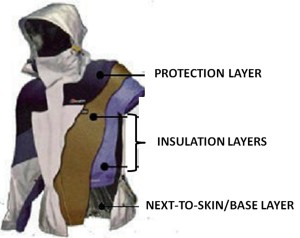How to Pack/Dress for Washington DC Touring
Please check out the local weather forecast for Washington DC, when packing for your trip. See Packing Guide for more details. Please make sure your child has packed plenty of layers, gloves, hat, ear covers, and appropriate footwear. Students are encouraged to have footwear that will allow them to tour memorials, Arlington Cemetery, and Mount Vernon in such a manner that their feet are warm and dry.
Remember that students will have limited access to their baggage on day 1 of the trip, and should plan to have warm clothing with them for touring as soon as we touch down in DC.
When packing for cold weather, we have found that layering works best. Sites such as the Lincoln Memorial, Arlington National Cemetery, and Mount Vernon are 100% outdoors, require extensive walking, and have no opportunity to go indoors. Dressing properly for the weather, and having backup layers will help ensure that you are ready for any weather.
Dressing With Layers for Warmth
Upper Body Layering:

Base Layer: This is your next-to-skin layer. It helps regulate your body temperature by moving perspiration away from your skin. Base layers should be made of a material such as merino wool or synthetic fabrics. Do not use cotton for this layer since it will only absorb and maintain moisture leaving you feeling chilled.
Insulation Layer: The insulating layer helps you retain heat by trapping air close to your body. This layer is where your fleece becomes useful. Although fleeces such as NorthFace or Colombia will serve well for this layer, they still leave you vulnerable to the wind. This is where your outer layer will complete your layering warmth.
Protection/Shell Layer: The shell or outer layer protects you from wind, rain or snow. Wind and water protection is the main purpose of this layer. This layer allows you to easily regulate your temperature by adjusting your zipper to allow extra heat to escape when vigorously hiking, and zipping up when you stop. This layer can also easily be removed when hopping on the bus or when entering a building.
Lower Body Layering
Many people will focus all their layering efforts on their upper body, and forget the other 50% of their body. Although layering your legs and feet are not as important as your upper body for controlling overall body temperature, keeping your legs warm will greatly add to your comfort level. The same principals apply as above, but you can get by with only two layers, keeping in mind the fundamentals of layering. A pair of long underwear, or moisture wick running pants will go a long way when worn under your jeans. Even a pair of quick dry, nylon workout pants will help wick away moisture and stop the wind.
Extras
Although kids may fight wearing hats and gloves, these items will make the difference between an enjoyable trip and one where students are huddling and jumping around trying to stay warm. We have found that hats and gloves that are small enough to keep in your pocket, yet warm enough to help stay warm at 30 degrees works best.
Looking for more info regarding layered dressing? Check out the video below, or visit REI’s resource on layering basics.




